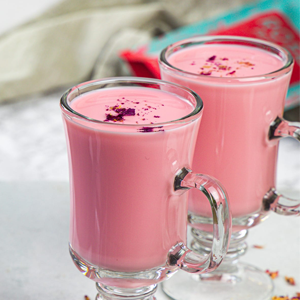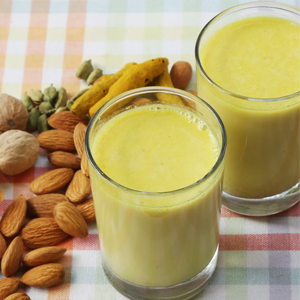
Alcohol abuse is any consistent or constant dangerous or problematic behavior with respect to drinking or alcohol use. A person may drink off and on, but that does not mean they suffer https://ecosoberhouse.com/ from this condition. Alcohol abusers are constantly experiencing issues related to their drinking. Being without alcohol for any period of time can make you feel physically ill.

When Does Alcohol Abuse Become Alcohol Use Disorder (Alcoholism)?
Ultimately, the effectiveness of alcohol abuse treatments is influenced by various factors, including treatment duration, the severity of the abuse, and individual engagement with the treatment process. It’s clear that while there is no one-size-fits-all solution, a combination of evidence-based practices offers the best chance for successful recovery. Understanding these impacts is crucial for recognizing the signs of alcohol abuse and the importance of seeking treatment. For more information on the effects of alcohol on the body, visit the National Institute on Alcohol Abuse and Alcoholism website. Alcohol abuse and alcoholism can also contribute to social isolation, financial problems, and legal issues that can indirectly impact your health.
Physical complications of alcohol use disorder
A doctor may also prescribe medications to help you manage withdrawal symptoms and support you in your effort to stop drinking. Benzodiazepines can help alleviate withdrawal symptoms, while naltrexone may help you manage alcohol cravings. As drinking becomes a pattern, it may take greater and greater amounts of alcohol to produce the same effects. Tolerance is often one of the driving factors of alcohol addiction. People may try to overcome their tolerance whenever they drink by consuming more alcohol. Someone with an alcohol abuse problem may not experience withdrawal symptoms.
- By Buddy TBuddy T is a writer and founding member of the Online Al-Anon Outreach Committee with decades of experience writing about alcoholism.
- The effects on health can be extensive, including liver disease, cardiovascular problems, and neurological damage, among others.
- To that end, just communicating about your issue can help you identify what’s at the root of your decision-making process.
- However, because of the intensity of alcohol dependence, treatment may often need to be longer, perhaps the difference of ninety days for alcohol abuse to a year or more for alcohol dependence.
- Find out what constitutes alcohol abuse, the difference between alcohol abuse and alcoholism and when it might be time to seek professional help.
Treatment Options for Alcoholism
- If you or someone you know exhibits these symptoms, seeking help from a healthcare provider is recommended.
- Despite its chronic nature, AUD can go into remission with appropriate treatment, which may include behavioral therapies, medications, and support groups.
- Similarly, a short man with a lower body weight may become intoxicated more quickly than a tall man with a higher body weight.
- If you’re struggling with alcohol use and need someone to talk to, contact us today.
- Regardless of the path you choose for treatment, the VOASW is here to support you.
- One is that, similar to the obesity field, the data we have so far don’t necessarily show a relationship between the GI side effects and the reduction in drinking.
Many of the effects of drinking every day can be reversed through early intervention. Typically, alcohol withdrawal symptoms happen for heavier drinkers. Alcohol withdrawal can begin within hours of ending a drinking session. If you are struggling with excessive alcohol consumption, it is best to seek help.
Is Alcohol Abuse the Same as Alcohol Dependence?
They usually build up a very high tolerance to it due to the regular consumption level. While the CDC reports that 90% of people who abuse alcohol don’t fit the criteria for alcoholism, it’s still a serious concern in the United States. Ten percent of Americans who drink excessively are classified as alcoholics, according to Reuters.
Physical and Psychological Consequences of Alcohol Abuse
But there are subtle yet important distinctions between these two terms. No; although many people believe these are the same, alcohol abuse and alcohol dependence are two separate issues. People who are abusing alcohol may have unhealthy habits when they’re drinking (such as bingeing), but that doesn’t mean they’re physically dependent on alcohol and require it daily. In fact, the CDC found that 9 in 10 people who consume too much alcohol aren’t alcoholics or alcohol dependent. Both conditions can lead to an increased risk of co-occurring mental health disorders, necessitating treatment that addresses both substance use and mental health simultaneously.
- Below, we’ll compare and contrast these two patterns of alcohol use in more detail, plus offer some guidance on identifying your options for getting treatment and support.
- Recognize the signs, embrace the courage to seek assistance, and remember that organizations like Vanguard Behavioral Health are dedicated to guiding individuals through their journey toward a healthier, alcohol-free life.
- We do a large amount of education at baseline when they enroll in our study.
Effects on Health and Wellbeing
If you’re concerned about someone who drinks too much, ask a professional experienced in alcohol treatment for advice on how to approach that person. If your pattern of drinking results in repeated significant distress and problems functioning in your daily life, you likely have alcohol use disorder. However, even a mild disorder can escalate and lead to serious problems, so early treatment is important. Health professionals sometimes prescribe medications to reduce the symptoms of withdrawal. Other medications can help you quit drinking by suppressing alcohol cravings or making you feel sick when alcohol enters your body. In addition, AUD is an addiction disorder, which means you may have a difficult time stopping alcohol consumption, even when you want to.
Whether you want to address your long-term relationship with alcohol or break a pattern of binge drinking, a recovery professional can offer guidance and support. Alcohol use disorder (AUD), formerly known as alcoholism and alcohol what is the difference between alcohol abuse and alcoholism addiction, describes a long-term pattern of alcohol use that becomes difficult to control. You might, for instance, feel an urge to drink even when you no longer want to, and have cravings when you try to avoid alcohol.

Theories suggest that for certain people drinking has a different and stronger impact that can lead to alcohol use disorder. Those with moderate to severe alcohol use disorders generally require outside help to stop drinking. This could include detoxification, medical treatment, professional rehab or counseling, and/or self-help group support. As alcohol abuse and alcoholism differ, so do the right treatment options for people with these conditions. A person can change their alcohol abuse patterns through therapy and willpower, and a mindful, intentional change in drinking habits.

But regardless of your genetic makeup, excessive drinking can also lead to a self-perpetuating cycle of alcohol abuse, triggering physiological changes that cause a dependence to form. Left untreated, alcohol abuse can quickly progress to a full-blown alcohol addiction. According to the CDC, up to 90% of people who abuse alcohol don’t currently fit the diagnostic criteria for severe alcoholism, also known as alcohol use disorder. However, they are at an increased risk for developing an alcohol addiction down the line. Binge drinking, one of these patterns, involves consuming several drinks in a short period of time. An episode of binge drinking can bring your blood alcohol content (BAC) to dangerous, even life-threatening levels.
























No comment